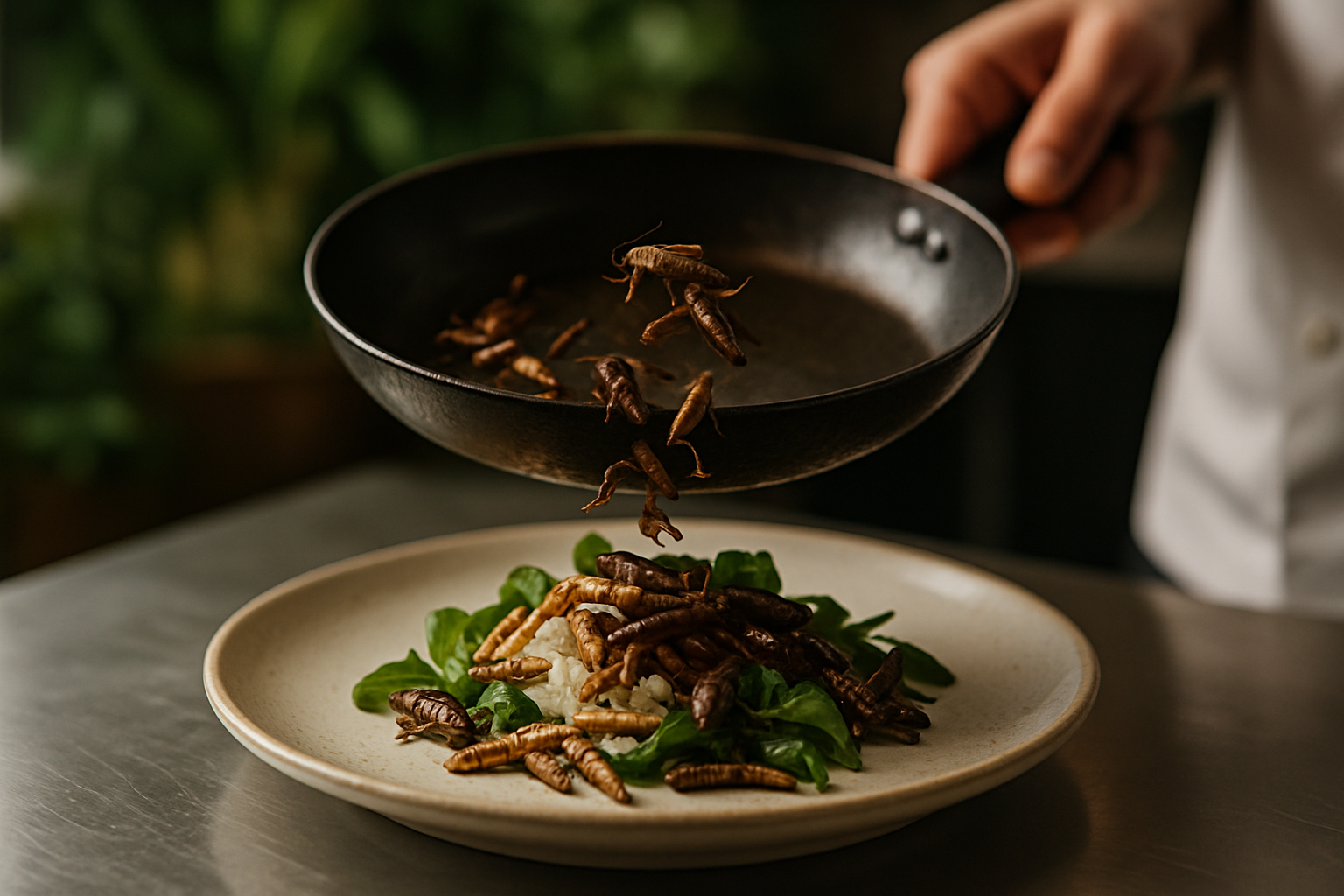Edible Insects: The Protein-Packed Future of Gastronomy
Crunchy, nutritious, and surprisingly delicious – welcome to the world of entomophagy. As global food demands soar and sustainability concerns grow, edible insects are emerging as a game-changing ingredient in modern cuisine. From gourmet restaurants to home kitchens, these tiny creatures are making big waves in the culinary world.

The Nutritional Powerhouse in Your Plate
Insects pack a serious nutritional punch. Gram for gram, many edible insects contain more protein than beef, chicken, or fish. They’re also rich in essential amino acids, healthy fats, fiber, and micronutrients like iron and zinc. For example, crickets contain about 65% protein by dry weight, compared to about 31% for chicken breast. This high nutritional value, combined with their low environmental impact, makes insects an attractive option for health-conscious and eco-aware consumers.
From Farm to Table: The Insect Supply Chain
The rise of edible insects has given birth to a new industry: insect farming. Unlike traditional livestock, insects require minimal space, water, and feed. They also produce fewer greenhouse gases and can be raised on organic waste, making them a circular economy darling. Companies are now scaling up production to meet growing demand, with some farms capable of producing tons of insects per day. This efficient production process is key to making insect-based foods more accessible and affordable.
Cooking with Crickets: Innovative Culinary Applications
Incorporating insects into everyday cooking is easier than you might think. Cricket flour, for instance, can be used to make protein-rich pancakes, cookies, and bread. Roasted mealworms make for a crunchy salad topping or a savory snack. More adventurous cooks are experimenting with ant eggs as a caviar substitute or using silkworm pupae in stir-fries. The key is to approach these ingredients with an open mind and a willingness to explore new flavors and textures.
Overcoming the ‘Yuck Factor’: Changing Perceptions
Despite their benefits, edible insects still face a significant hurdle in many Western countries: the ‘yuck factor’. Changing deeply ingrained cultural attitudes towards eating insects is a challenge, but it’s not insurmountable. Education about the environmental and health benefits of entomophagy, coupled with exposure to well-prepared insect dishes, can help shift perceptions. As more people try and enjoy insect-based foods, the stigma is slowly but surely fading away.
Insect Eating 101: Tips for Newcomers
-
Start with processed forms like cricket flour or protein bars to ease into the concept
-
Try insects that are seasoned or flavored to mask their natural taste initially
-
Incorporate small amounts into familiar recipes before trying insect-centric dishes
-
Research the source of your edible insects to ensure they’re raised for human consumption
-
Experiment with different cooking methods to find textures you enjoy
-
Begin with milder-tasting insects like crickets or mealworms before moving to stronger flavors
A Sustainable Solution for a Hungry Planet
As we face the challenges of feeding a growing global population, edible insects offer a promising solution. They provide a sustainable, nutritious, and potentially delicious alternative to traditional protein sources. While it may take time for insects to become a staple in Western diets, the trend is undeniably on the rise. From innovative chefs to forward-thinking consumers, more people are embracing the idea that sometimes, the best things come in small, six-legged packages. The future of food might just have wings, and it’s time we all took a bite.





